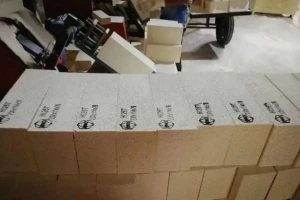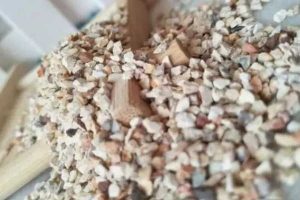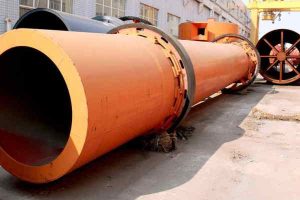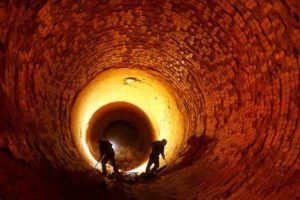La piel del horno está hecha de clinker o polvo de la fase líquida o semilíquida a un sólido.
Sus funciones principales son
1. Proteja los ladrillos refractarios de la erosión química y de alta temperatura directa.
2. Almacenar energía térmica, reducir la pérdida de calor de la carcasa del horno al área circundante, y mejorar la eficiencia térmica del horno rotatorio.
3. Actuar como medio de transferencia de calor., absorción de calor por radiación o convección cuando la carcasa del horno está expuesta al aire y en contacto con aire caliente, y transfiriendo calor a la materia prima por conducción cuando la coraza del horno está en contacto con el material en la parte inferior.
4. La superficie de la piel del horno es áspera., puede reducir el caudal de polvo y prolongar el tiempo de reacción del material en el horno.
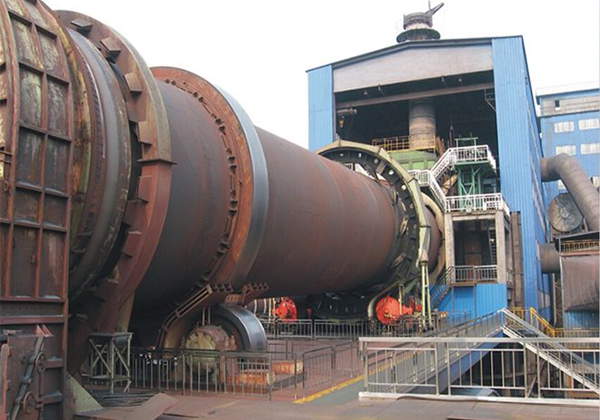
The Main Factors Affecting The Generation Of Kiln Skin
1. The Chemical Composition Of The Material
Kiln skin is the product of the process of turning the liquid phase into the solid phase. Aluminum and iron composition is more, the amount of liquid phase is more, easy to form the kiln skin. The composition of aluminum and iron is less, the amount of liquid phase is less, and the formation of kiln skin is more difficult. With more aluminum in the raw material, the viscosity of the liquid phase is large, forming the kiln skin is more difficult, but once formed, it is more solid. With more iron in the raw material, the viscosity of the liquid phase is smaller, and the kiln skin is easy to form, but the formed kiln skin also easy to falls off.
2. The Temperature Of The Flame
With low flame temperature, the liquid phase formed by the material is less, not easy to form the kiln skin, flame temperature is too high, it will make the kiln skin temperature higher than the solidification temperature of the liquid phase, and the kiln skin is easy to fall off.
3. The Shape Of The Flame
The temperature of the kiln skin is affected by the shape of the flame, as well as the heat dissipation of the kiln shell cylinder. Generalmente hablando, too short, too sharp, too thick, and wide flame erosion of the kiln skin is more harmful, long flame is more favorable to the kiln skin, but will make the kiln heat dispersion, bad for firing.
Por lo tanto, during operation, we must maintain a certain reasonable flame shape and position, strictly control the clinker caking, prevent the caking of large blocks to wash the kiln skin, stabilize the kiln’s thermal regime, prevent caking, and find large blocks or caking to deal with in time.
Kiln Skin Shedding And Redness
Kiln skin will fall off because the temperature exceeds its solidification temperature, and sometimes it will also fall off with the firebrick because of uneven heating, the main reasons for falling off are
1. unstable feed composition and feeding quantity or fluctuating output, resulting in unstable kiln temperature If the feeding material is good for a while, the kiln temperature is high, and when it is not, the temperature is low. When the amount of material is high, the temperature is low, and when the amount of material is low, there is no material to absorb more than the heat. De este modo, the temperature is high and low, resulting in uneven thermal expansion and contraction of the kiln skin, easy to fall off.
2. wrong operating procedures mainly due to improper adjustment of the shape of the flame.
When you find that the kiln skin is falling off, you can judge it by checking the kiln shell temperature in the central control room.
Generalmente, the temperature of the kiln shell is around 200-300 grados, and if the temperature is too high, there is a possibility that the kiln skin will fall off.
At this time, you should immediately remedy the kiln skin measures, immediately reduce the amount of coal injection, or change the shape and position of the flame.
At the site, you can use a blower or compressed air to cool the kiln shell that has fallen off.
The blower should be placed at the four or eight o’clock position (where the material flow is), as close as possible to the area where the kiln skin has fallen off.
The shedding of kiln skins can be very damaging to the rotary kiln’s resistant material, and to make it last longer, it is more important to reduce the fluctuations in the production of the rotary kiln, including the medium, temperatura, and output.
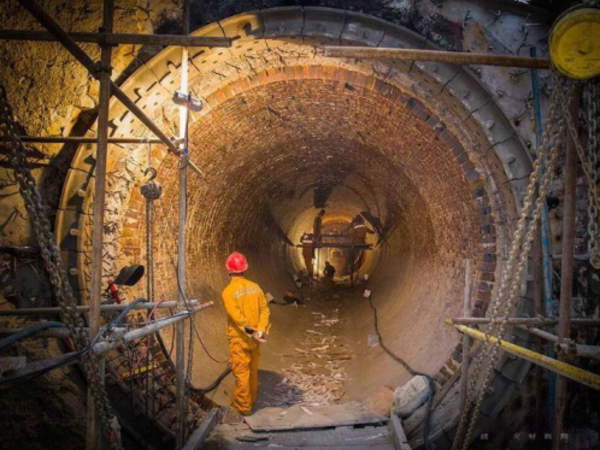
Asi que, What Are The Requirements and Types Of Refractory Bricks Used in Cement Rotary Kilns?
Refractory bricks should have strong chemical resistance. During the operation of the cement rotary kiln, it will be subject to wear and erosion of clinker residue, so the refractory bricks should have a strong resistance to chemical erosion.
In different parts of the cement rotary kiln, the atmosphere and working temperature are different, so the refractory bricks used in different parts of the rotary kiln, such as the decomposition zone, transition zone, and cooling zone, are also different.
At this stage, the following types of refractory bricks are used in rotary kilns.
Cement rotary kiln commonly used refractory bricks are ladrillos con alto contenido de alúmina, ladrillos de magnesio-cromo, magnesia-alumina spinel bricks, magnesia-iron spinel bricks, etc..
The higher the alumina content of high alumina brick, the stronger the resistance to acid and alkaline chemical slag erosion. Generally used in cement rotary kiln firing belts and other places.
Magnesia-chromium brick is mainly composed of spinel and magnesite. Magnesia-chromium brick has the characteristics of high refractoriness, strong resistance to alkaline slag erosion, and good thermal stability. It is generally used in the firing zone of a cement kiln.
Magnesia-alumina spinel brick is made of high-purity magnesia sand and aluminum ore by batching, mezclando, and pressing. It has good thermal shock resistance and reduction resistance. The cement kiln transition zone generally uses magnesia spinel.
Magnesia-iron spinel brick is a kind of chrome-free characteristic of the environment beneficial pollution is very little, excellent thermal shock stability, good hanging kiln skin ability, erosion resistance is also very good, low thermal conductivity and thermal expansion, and good structural flexibility. In the real production application, the service life of magnesia iron spinel brick is more than 12 months.
Dolomite brick has a low price, in the price is not high at same time its hanging kiln skin sex is also quite recognized by the industry. In the rotary kiln firing zone, the free f-CaO in the dolomite brick reacts with the C2S in the cement clinker to produce the high melting point C3S, which allows the brick to have a stable kiln skin adhering to the hot surface.
Under the rapid development of the world cement industry, PER Refractories has produced refractory bricks for cement kilns that have made significant progress in both type and quality. We offer a wide range of high-quality refractory products.

